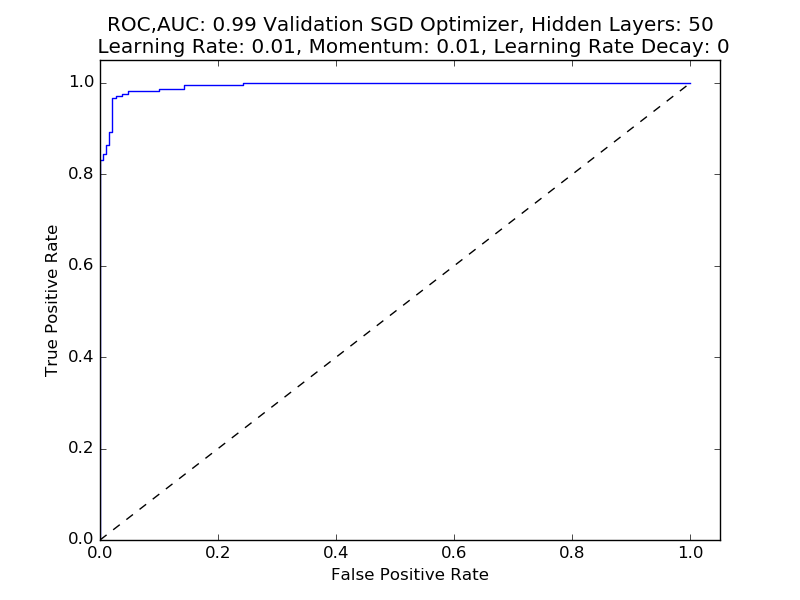Transfer Learning Using Convolutional Neural Networks to Detect Spoofs in Fingerprints
Abstract
Detection of fake fingerprints is an important task in the field of biometrics. Classifiers must be able to distinguish not only fingerprints from other fingerprints but real fingerprints from fake fingerprints. These fake fingerprints are called ”spoofs”. A neural network is proposed as one solution to detect spoof fingerprints from images. Neural networks that utilize image classification are time-consuming to train. For this reason, it is proposed that a pre-trained image classification neural network is used as a feature extractor and a simpler trainable neural network be used on those extracted features to produce a classifier. This classifier produces a .96 testing AUC [1a] when trained against the full dataset and at least a .95 testing AUC [2a] [2b] when a spoof material it has not seen is introduced.
1 Introduction
Detection of fake fingerprints is an important part of a fingerprint-based biometric system. These fake fingerprints are commonly called ”spoofs.” It is not enough that the system can tell apart one person from another, but also must be able to tell apart fake fingerprints from real fingerprints to inspire real confidence in its users. Spoof fingerprints can be made from common household materials and more materials are appearing which can be used to make these spoofs. Because of this, it is also important that a spoof detection system also can detect spoofs when novel types of materials are introduced to it.
A neural network may be used to solve this complex classification problem as it has the ability to learn from a large variety of samples and draw complex decision boundaries. ([1] Section 2.2.1) Neural networks are expensive to train for complex problems involving large dimensional data, such as images. It is possible to take a pre-trained general image classification neural network and reapply it to this classification task. This enables a much quicker training time and more accurate results than could be achieved by a small team.
2 Methods
The LivDet11 Database provides four types of detectors and five spoof materials. For training purposes two of the detectors were used: The Digital and Sagem detectors. Alexnet was used as a general image feature extractor. Alexnet has been trained on the ImageNet database, which is a general purpose image database.([2] 1) Alexnet has achieved a top-5 test error rate of 15.3% in the ILSVRC-2012 competition ([2] 1). AlexNet ”consists of five convolutional layers, some of which are followed by max-pooling layers, and three fully-connected layers with a final 1000-way softmax” ([2] 1) Convolutional Layers are particularly well suited for image processing because they take into account the spatial structure of the image. ([3] 1)
Alexnet is trained as a general image classifier, which is unsuitable for this experiment. In order to use it as a general image feature extractor, five of its final layers were removed. These layers in reverse order were a softmax classification layer, a dropout layer, a fully-connected layer with Relu activation, a dropout layer, and a fully-connected layer with Relu activation. This modified Alexnet was then activated on each of the images and the activations were saved to files.
A simple neural network was trained with 4096 inputs which are the output size of the last layer of the modified Alexnet, a variable hidden layer size, and a single output. All of the activations in that classifier were hyper tangent. The chosen objective function was mean squared error, as it is the most common criterion. ([1] Section B.6)
For inference on unknown materials the same method and classifier were applied, except the classifier was trained on all but 10% of the live samples and all but one of the spoof types. The classifier was then tested on the remaining 10% of the live samples and all of the spoof samples for that particular material.
3 Results
It was found that 50 hidden layer neurons worked well when trained with stochastic gradient descent with a learning rate of 0.01 and a momentum of 0.01. Validation data was taken as 10% of the training data. It achieved a validation AUC of .99 [1b] and a testing AUC of .96 [1a] after training for 100 epochs on the training data. A higher momentum was useful because it helped to speed up the stabilize the convergence of training. ([1] Section 4.3.1)
For testing with the introduction of novel materials, it was found that Silicone produced the lowest AUC at .92 [2d]. This was followed by Gelatine [2a] and Latex [2b] which both achieved an AUC of .95. Playdoh had an AUC of .96 [2c]. WoodGlue was the easiest to determine when it was introduced with an AUC of .99 [2e].
Experiments with the number of hidden layer neurons showed that a few neurons could classify spoofs well. It is believed this is because the number of parameters explodes with the number of hidden layer nodes ([1] Section 4.5.1) and the difficulty of classification on extracted features is low. For contrast, the Alexnet network has about 4 million parameters. A rule of thumb states that there should be 10 times the number of parameters as data. ([1] Section 4.5.1) To fully train Alexnet for this classification purpose there would need to be 40 million images, which is unrealistic for a smaller company or research team.
Momentum was useful when training the network because it allowed the system to overcome local minima in the performance surface. ([1] Section 4.3.1) The AUCs were much more repeatable when this momentum constant was larger.
Because the classification neural network is only a traditional feed forward neural network, it is very efficient to train. Running each test took less than a minute on a Nvidia GTX 780, a consumer lower end graphics card.
4 Conclusion
The classifier produces good results with a relatively short training period. The classifier also performs well when exposed to spoof material types it has not seen. Feature extraction using a general purpose image classification neural network produces simpler features which can be more readily trained for specialized image classification tasks. In the future other pre-trained image classification networks could be used for feature extraction or multiple could be used to produce different kinds of features.
5 Reference
References
[1] e. a. J. C. Prncipe, Neural and Adaptive Systems: Fundamentals Through Simulations. New York: Wiley, 1999.
[2] G. E. H. Alex Krizhevsky, Ilya Sutskever, “Imagenet classification with deep convolutional neural networks,” in Advances in neural information processing systems, pp. 1097–1105.
6 Appendix
from keras.optimizers import SGD
from keras import *
from keras.layers import *
from keras.models import *
from convnetskeras.convnets import preprocess_image_batch, convnet
import os
import matplotlib.pyplot as plt
from sklearn.metrics import roc_curve, auc
import random
import pickle
def make_extractor_model():
model = convnet(
’alexnet’, weights_path="alexnet_weights.h5", heatmap=False)
model.layers = model.layers[:-4]
model = Model(input=model.input, output=model.layers[-1].output)
return model
def make_model(hidden_layer_neurons):
return Sequential([
Dense(hidden_layer_neurons, input_dim=4096,
name="cust_dense_1", init="uniform"),
Activation(’tanh’),
Dense(1),
Activation(’tanh’)])
def flatten_once(l):
return [item for sublist in l for item in sublist]
def split_train_validate(l, fraction):
shuffled_data = sorted(l, key=lambda k: random.random())
return (shuffled_data[int(fraction * len(shuffled_data)):], shuffled_data[:int(fraction * len(shuffled_data))])
def plot_results(y_test, y_score, title, location, show=False):
fpr, tpr, _ = roc_curve(y_test, y_score)
roc_auc = auc(fpr, tpr)
if roc_auc < .7:
return # IgIgIgIgnore it
plt.figure()
plt.plot(fpr, tpr, label=’ROC curve (area = %0.2f)’ % roc_auc)
plt.plot([0, 1], [0, 1], ’k--’)
plt.xlim([0.0, 1.05])
plt.ylim([0.0, 1.05])
plt.xlabel(’False Positive Rate’)
plt.ylabel(’True Positive Rate’)
full_title = ’ROC,’ + (’AUC: %0.2f’ % roc_auc) + str(title)
plt.title(full_title)
try:
os.mkdir("./roc_curves/" + location)
except Exception:
pass
plt.savefig("./roc_curves/" + location + "/" + full_title +
".png".replace("\n", "").replace(" ", "_"))
if show :
plt.show()
plt.close()
class CustTrainingResults:
def __init__(self, test_targets, test_outputs, validation_targets, validation_outputs, training_targets, training_outputs):
self.test_targets = test_targets
self.test_outputs = test_outputs
self.validation_targets = validation_targets
self.validation_outputs = validation_outputs
self.training_targets = training_targets
self.training_outputs = training_outputs
def train_all_images(model, epochs, validation_split_fraction):
BATCH_SIZE = 100
training_imgs = []
training_targets = []
testing_imgs = []
testing_targets = []
for root, dirs, files in os.walk("./LiveDet11AlexnetExtracted"):
for f in files:
fname = os.path.join(root, f)
if "Training" in fname:
training_imgs.append(fname)
if "Spoof" in fname:
training_targets.append([1])
else:
training_targets.append([0])
if "Testing" in fname:
testing_imgs.append(fname)
if "Spoof" in fname:
testing_targets.append([1])
else:
testing_targets.append([0])
fraction_using = 1
training = list(zip(training_imgs, training_targets))
testing = list(zip(testing_imgs, testing_targets))
training = random.sample(training, int(len(training) / fraction_using))
testing = random.sample(testing, int(len(testing) / fraction_using))
training, validation = split_train_validate(
training, validation_split_fraction)
cur_images = []
for f in map(lambda a: a[0], training):
with open(f, ’rb’) as f:
cur_images.append(pickle.load(f))
cur_images = np.array(cur_images)
cur_targets = list(map(lambda a: a[1], training))
print(cur_images)
validation_images = []
for f in map(lambda a: a[0], validation):
with open(f, ’rb’) as f:
validation_images.append(pickle.load(f))
validation_images = np.array(validation_images)
validation_targets = list(map(lambda a: a[1], validation))
model.fit(cur_images, cur_targets, nb_epoch=100, shuffle=True, validation_data=(
validation_images, validation_targets), batch_size=BATCH_SIZE)
testing_imgs = []
for f in map(lambda a: a[0], testing):
with open(f, ’rb’) as f:
testing_imgs.append(pickle.load(f))
testing_imgs = np.array(testing_imgs)
print(testing_imgs)
return CustTrainingResults(list(map(lambda a: a[1], testing)), model.predict(testing_imgs, batch_size=BATCH_SIZE, verbose=1),
list(map(lambda a: a[1], validation)), model.predict(
validation_images, batch_size=BATCH_SIZE, verbose=1),
list(map(lambda a: a[1], training)), model.predict(cur_images, batch_size=BATCH_SIZE, verbose=1))
return (list(map(lambda a: a[1], testing)), model.predict(testing_imgs, batch_size=BATCH_SIZE, verbose=1))
def preprocess_alexnet(imgs):
return preprocess_image_batch(imgs, img_size=(256, 256), crop_size=(227, 227))
def extract_features(model):
images = []
for root, dirs, files in os.walk("."):
for f in files:
fname = os.path.join(root, f)
if "Digital" in fname or "Sagem" in fname:
images.append(fname)
features = model.predict(preprocess_alexnet(images), verbose=1)
for fname, feature in zip(images, features):
with open("./LiveDet11AlexnetExtracted" + (fname[10:].replace("/", "")), "wb") as f:
pickle.dump(feature, f)
def train_and_plot(model, epochs, validation_split_fraction, title):
results = train_all_images(model, epochs, validation_split_fraction)
plot_results(results.training_targets,
results.training_outputs, "Training", title)
plot_results(results.validation_targets,
results.validation_outputs, "Validation", title)
plot_results(results.test_targets, results.test_outputs, "Testing", title)
EPOCHS = 100
VALIDATION_SPLIT = 1 / 10
def test_sgd(learning_rate, momentum, decay, hidden_layer_neurons):
model = make_model(hidden_layer_neurons)
sgd = SGD(lr=learning_rate, momentum=momentum, decay=decay)
model.compile(optimizer=sgd, loss="mse")
title = "SGD Optimizer, Hidden Layers: " + str(hidden_layer_neurons) + "\n Learning Rate: " + str(
learning_rate) + ", Momentum: " + str(momentum) + ", Learning Rate Decay: " + str(decay)
train_and_plot(model, EPOCHS, VALIDATION_SPLIT, title)
# test_sgd(0.01,1e-2,0,50)
# test_sgd(0.1,1e-2,0,50)
# test_sgd(0.001,1e-2,0,50)
# test_sgd(0.0001,1e-2,0,50)
# test_sgd(0.00001,1e-2,0,50)
class CustLeaveOutResults:
def __init__(self, left_out_material, training_targets, training_outputs, left_out_targets, left_out_output):
self.left_out_material = left_out_material
self.training_targets = training_targets
self.training_outputs = training_outputs
self.left_out_targets = left_out_targets
self.left_out_output = left_out_output
# Begin Leave out tests
def train_leave_one_out(model, out_type):
BATCH_SIZE = 100
training_imgs = []
training_targets = []
testing_imgs = []
testing_targets = []
for root, dirs, files in os.walk("./LiveDet11AlexnetExtracted"):
for f in files:
fname = os.path.join(root, f)
if out_type in fname:
testing_imgs.append(fname)
if "Spoof" in fname:
testing_targets.append([1])
else:
testing_targets.append([0])
else:
training_imgs.append(fname)
if "Spoof" in fname:
training_targets.append([1])
else:
training_targets.append([0])
training = list(zip(training_imgs, training_targets))
testing = list(zip(testing_imgs, testing_targets))
training, extra_testing_samples = split_train_validate(training, 1 / 10)
# Only include non spoof
testing += list(filter(lambda a: a[1] == [0], extra_testing_samples))
cur_images = []
for f in map(lambda a: a[0], training):
with open(f, ’rb’) as f:
cur_images.append(pickle.load(f))
cur_images = np.array(cur_images)
cur_targets = list(map(lambda a: a[1], training))
model.fit(cur_images, cur_targets, nb_epoch=100,
shuffle=True, batch_size=BATCH_SIZE)
testing_imgs = []
for f in map(lambda a: a[0], testing):
with open(f, ’rb’) as f:
testing_imgs.append(pickle.load(f))
testing_imgs = np.array(testing_imgs)
return CustLeaveOutResults(out_type,
list(map(lambda a: a[1], training)), model.predict(
cur_images, batch_size=BATCH_SIZE, verbose=1),
list(map(lambda a: a[1], testing)), model.predict(testing_imgs, batch_size=BATCH_SIZE, verbose=1))
def test_leave_out(learning_rate, momentum, decay, hidden_layer_neurons):
types = ["Gelatine", "Latex", "Playdoh", "Silicone", "WoodGlue"]
for type in types:
model = make_model(hidden_layer_neurons)
sgd = SGD(lr=learning_rate, momentum=momentum, decay=decay)
model.compile(optimizer=sgd, loss="mse")
title = "Leave Out " + type
results = train_leave_one_out(model, type)
title = " Training without type" + type + " "
plot_results(results.training_targets,
results.training_outputs, title, type)
title = " Testing when " + type + " is introduced"
plot_results(results.left_out_targets,
results.left_out_output, title, type)
test_leave_out(.01, .001, 0, 50)
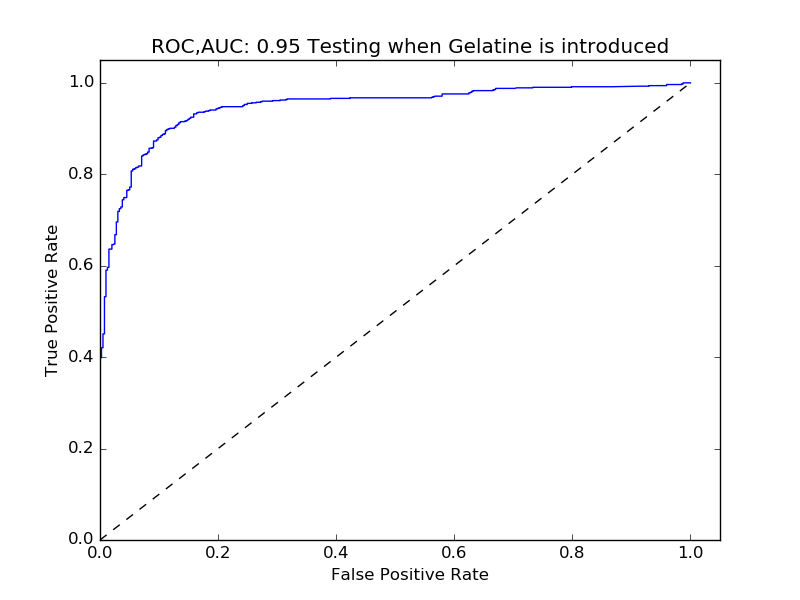 (a) Gelatine
(a) Gelatine
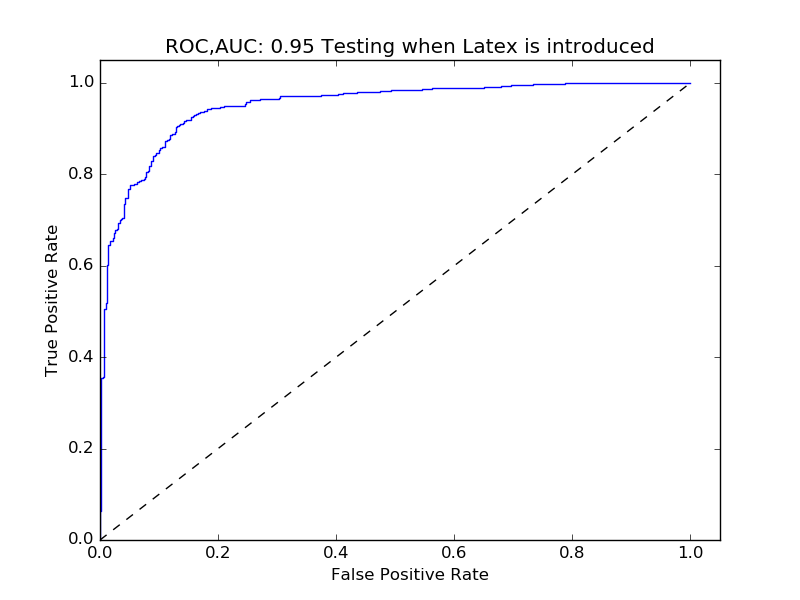 (b) Latex
(b) Latex
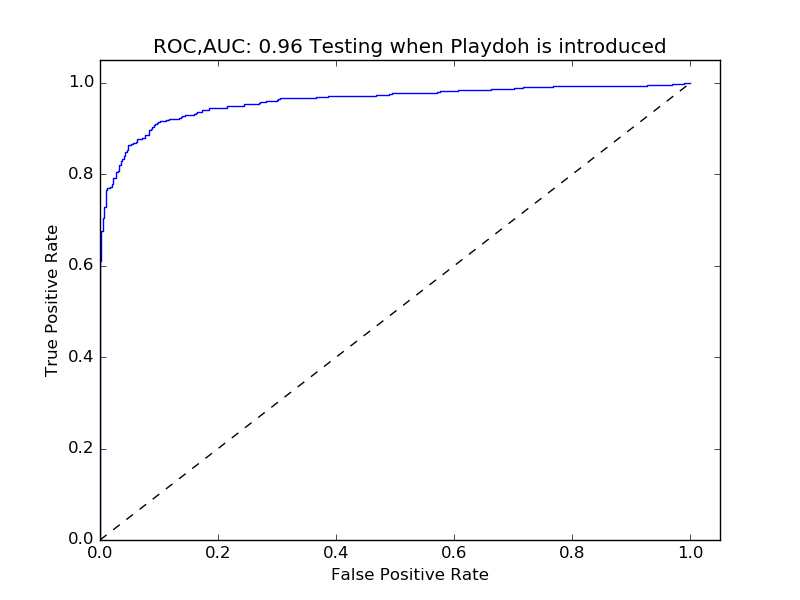 (c) Playdoh
(c) Playdoh
![]() (d) Silicone
(d) Silicone
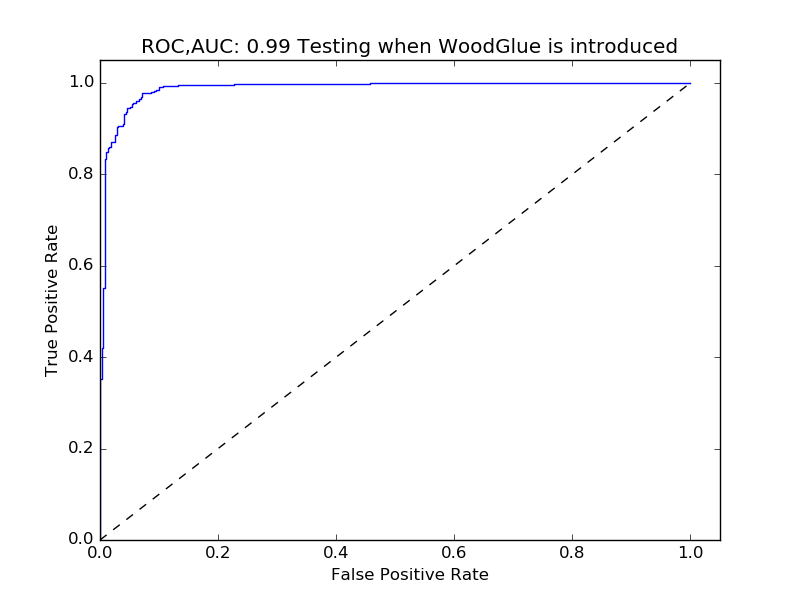 (e) Wood Glue
(e) Wood Glue

